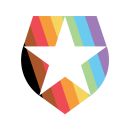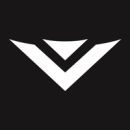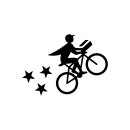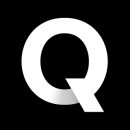Renowned as a hub for tech giants, Seattle is also home to a rapidly expanding swath of startups. Whether large or small, these companies are working on major projects right now, offering a wide range of opportunities to eligible engineers on the hunt for career growth, a change of scenery — or both.
To learn more about these projects, we spoke with engineers at six Seattle area tech companies — all of whom happen to be women — about the projects they’re working on and how they arrived in their current role. Among them they represent a range of ages, backgrounds and companies, from California behemoths to Seattle’s newest homegrown unicorn.

Seattle-based Rover helps pet parents find pet sitters, walkers and daycares for their furry children through its online peer-to-peer platform. The web and app portals come complete with appointment booking functionality, payment tools and the ability to send and receive updates on what users’ four-legged friends are up to while they’re away.
Software Engineer Lila Garcia made the transition into tech after considering a career in academia.
Tell me a bit about your engineering background. Did you attend a school or bootcamp? How did you arrive at your current position?
I moved to Seattle seven years ago to get my master’s degree in geography at the University of Washington. My undergrad was a double major in international affairs and history, and I was interested in academia. However, I quickly realized that wasn’t the right path for me and began to find other sources of inspiration.
I had completed some coursework in Python as it could be used with ArcGIS, a digital mapping software, so I was already exploring a little bit of coding. I took another class on data visualization and applied to Ada Developers Academy after finishing my master’s. I interned at Getty Images, and started at Rover in 2016. Rover felt like such a great fit for me since I loved the size of the company, the culture of the team, as well as the technology stack. Plus, I love animals. I started out as an entry level full-stack engineer when there were about 20 engineers at Rover. Earlier this year I joined the internationalization team, which was formed as part of our global expansion. It’s been a nice fit with my background in international affairs.
Working within that large cross-team effort was really exciting to me.”
What is your favorite project you have had the opportunity to work on, and why? When you hit a snag on a difficult project, how do you work through it?
My favorite project to date has been the migration of DogBuddy, which we acquired as part of our European expansion, and working toward the European launch. Working within that large cross-team effort was really exciting to me. I studied abroad in Barcelona, so traveling there to work with the DogBuddy team and learn about internationalization and localization was exciting subject matter for me.
We’ve managed to maintain a very supportive environment at Rover. When I hit a snag, my first instinct is to think if there’s someone in the office who might offer some advice. I have learned a lot in the past three years, but there are still some gaps in my technical skill set. If it’s something really technically challenging, I pair with someone and work with them through the problem.

Auth0’s “Identity-as-a-Service” platform solves authentication and authorization headaches for business applications providing security for tens of millions of logins each day. The Bellevue startup recently achieved unicorn status with a $103 million funding round.
Internal Services Engineering Manager Marianne Bellotti and Application Security Engineer Eva Sarafianou took us through their own unique career paths.
Tell me a bit about your engineering background. Did you attend a school or bootcamp? How did you arrive at your current position?
Bellotti: I like to joke that I spent ten years of my life desperately trying not to become a software engineer. My father was a software engineer, and by age 16 I was building my own machines from spare parts in my parents’ basement. But this was all back in the 1990s, and it took a while for the things that were interesting to me to intersect with the tech industry. In the meantime, I had great fun traveling the world, working low-level jobs in international development and programming on the side for some extra money. Eventually I became tired of the global nomad thing, and worked with the UN and the State Department before coming to Auth0.
Sarafianou: I studied electrical and computer engineering at university, and one class was the catalyst that made me focus on security engineering: cryptography. I did my master thesis on cryptography and then worked as a security researcher at my university. I enjoyed doing novel research, attending and presenting at conferences, but at some point I wanted to do more practical security engineering work. After a couple of years of security consulting, I felt that continuously switching projects didn’t allow me to gain deep knowledge. I started working at Auth0 because I wanted to work on an internal team of a software company, where I could focus on improving the security of the product in a consistent manner.
At some point in your career you realize that building good technology is not about having the best engineers.”
What is your favorite project you have had the opportunity to work on, and why? When you hit a snag on a difficult project, how do you work through it?
Bellotti: Auth0 gave me a brand new team to build from scratch and I love that challenge. What kind of people do we need to hire? What skill levels? How do we get more diverse candidates in our pipeline? How do we onboard and nurture them once they are here? I find empowering other people very rewarding. At some point in your career you realize that building good technology is not about having the best engineers, it’s about creating an environment where the right engineers can function as the best possible team.
Sarafianou: Our vulnerability management program is one of my favorite projects. Once we get a report, we have to reproduce the security issue, understand the possible impact, propose a mitigation and assign a priority for the fix. We let the relevant engineering team know about the issue, review the fix once ready and handle any communications with customers. I really enjoy this whole process because explaining complex security issues to diverse audiences requires having a deep and clear understanding of the issues, and this process helps me become a better security engineer. Triaging and reproducing vulnerabilities gives me the opportunity to better understand small details of our codebase and product, and how our users tweak it to meet their needs.
In regards to tackling a difficult project, I must admit at the beginning I often feel unable to work through it. Then I take some time to sit back and make sure I understand the problem and where the difficulties are. This usually requires some research, and I always ask teammates or other engineers for advice and feedback. Having a way to measure my progress keeps me on track and helps boost my confidence.
Audiophiles will prick their ears up at the news that VIZIO, one of the world’s leading sound bar and HDTV brands in the United States, is hiring in Seattle. Employees at the company’s Lower Queen Anne outpost work on its SmartCast platform, which uses voice, casting and mobile technology.
As a veteran coder, Senior Software Engineer Christina Bailey has had a front row seat to the rise of the internet and mobile technology.
Tell me a bit about your engineering background. Did you attend a school or bootcamp? How did you arrive at your current position?
I received my bachelor’s degree in computer science back before the internet, so I have been a software engineer for a very long time. I have worked on software for VLSI CAD tools, Palm Pilot, audio/video codecs and then Android and iOS apps, which I have been doing for the last 10 years. I came to VIZIO six months ago to lead the iOS team working on the SmartCast app and to make an impact. The startup pace and ability to make critical decisions have been amazing.
I get a lot of satisfaction from learning new technologies, solving interesting problems and collaborating with fellow engineers.”
What is your favorite project you have had the opportunity to work on, and why? When you hit a snag on a difficult project, how do you work through it?
I am just wrapping up my first project at VIZIO, where I got to work with some great engineers from my team, our contracting team and Apple. I get a lot of satisfaction from learning new technologies, solving interesting problems and collaborating with fellow engineers.
When you hit a difficult problem and can’t copy/paste the solution from Stack Overflow, the best thing to do is take a break, walk around the block listening to loud music and then talk to coworkers — which is what I value most here at VIZIO.
Postmates’ revolutionary Urban Logistics Platform connects users with a network of locally based couriers capable of delivering anything — sandwiches, Advil, a pint of ice cream — from a huge variety of restaurants and stores. Headquartered in San Francisco, the company raised a staggering $300 million in funding late last year, cementing its unicorn status.
Server Engineer Sindhu Alagesan described her work on a new financial feature of Postmates’ Delivery as a Service product.
Tell me a bit about your engineering background. Did you attend a school or boot camp? How did you arrive at your current position?
After completing my bachelor’s degree at Anna University’s college of engineering, I did a master’s degree in computer engineering at Texas A&M University. I then worked for a few years at Microsoft before joining Postmates.
Most recently, we launched a partnership with Square, where sellers can offer on-demand delivery direct from their Square terminal.”
What is your favorite project you have had the opportunity to work on, and why? When you hit a snag on a difficult project, how do you work through it?
I work on the payments team at Postmates, and a favorite project of mine was building a bespoke finance service to record and track all transactions for our Delivery as a Service product. With Delivery as a Service, merchants can plug Postmates into their own sites and offer on-demand delivery to their customers. Most recently, we launched a partnership with Square, where sellers can offer on-demand delivery direct from their Square terminal. This was a brand new payment model built to support that partnership.

After taking the world by storm as Snapchat, parent company Snap is proving it’s no one-trick pony in 2019. The company’s Seattle employees, based in Pike Place Market, work with a range of the company’s products and features, including its glasses-mounted Spectacles camera, its wildly popular Bitmoji avatars and Snapchat’s recently launched gender swapping lens. Headquartered in Venice, California, the company has offices in 17 different cities around the world.
Release Engineering Manager Claire Reinert highlighted the fact that Snap issues new features every two weeks, and loves the challenge of leading teams that address product or feature crashes.
Tell me a bit about your engineering background. Did you attend a school or bootcamp? How did you arrive at your current position?
I have a degree in economics, and entered into engineering via a non-conventional path. At a previous company, in the midst of a big digital transition, I took on an opportunity to help in a QA capacity, then worked hard to learn the discipline and transitioned into the role full-time. I then moved to a digital agency where I worked my way into a QA manager role before moving to Snapchat in 2015. Because the company was at a huge inflection point from a growth perspective, I again had an opportunity to stretch into a new capacity and took on release engineering, which I have owned for the past four years.
Because we release new features every two weeks across both iOS and Android, there is never a shortage of new problems to solve.”
What is your favorite project you have had the opportunity to work on, and why? When you hit a snag on a difficult project, how do you work through it?
My favorite project has been our ownership of crashes. It’s an incredibly complex and difficult area of ownership, however the analytical tributes have made it incredibly interesting and challenging. This has included everything from building metric monitors and real-time dashboards to stack trace and root cause analysis.
Because we release new features every two weeks across both iOS and Android, there is never a shortage of new problems to solve. When faced with really challenging and complex problems, my navigation strategy is to organize information and pull in relevant team members across teams or disciplines to help solve the problem. Bringing together individuals with different perspectives and skills almost always yields better results.

Quantcast measures the behavior of internet users as they move navigate the web, then applies machine learning technology to give a window on the movement and distribution of traffic at any given moment. The technology works on more than 100 million apps and websites, working at a mind-bending scale to help businesses and publishers understand and grow audiences. Headquartered in San Francisco, the company’s Bellevue office is just one of ten offices distributed throughout North America, Europe and the Asia Pacific region.
Senior Software Engineer Marie Paulsen climbed the ranks at a number of distinguished Puget Sound tech companies before landing at Quantcast.
Tell me a bit about your engineering background. Did you attend a school or bootcamp? How did you arrive at your current position?
I attended the University of Washington in Seattle from 2002 to 2006, graduating with a BS in computer science. I have since worked as a software development engineer in test at Amazon and ProQuest and an SDE at Audience Science. I joined Quantcast as a software engineer two years ago was recently promoted to senior software engineer.
Quantcast has a strong helping culture, which makes my work more enjoyable and improves my velocity.”
What is your favorite project you have had the opportunity to work on, and why? When you hit a snag on a difficult project, how do you work through it?
Most of my software roles have given me the opportunity to build data visualizations for performance analysis, business reporting or diagnosing system issues, and my current role at Quantcast is no exception. I led a project to create and populate a system of dashboards in Grafana — a free metrics visualization system — that help us see how the data flows through our systems. This allows us to diagnose bugs, operational issues and corrupt and missing input data more quickly and easily, leading to higher-performing campaigns that meet customer expectations. We worked as a team to build the metrics reporting and dashboards. The result is happier customers who can self-serve more easily, and happier developers who now spend less time on investigations.
When I run into problems at work, I start by iteratively dividing the territory where the problem could be and simplifying the code until I have located the exact source of the problem. Then I search the internet for solutions or ask my teammates, other engineers or manager for help. Quantcast has a strong helping culture, which makes my work more enjoyable and improves my velocity by reducing the amount of time that I spend searching for solutions.












